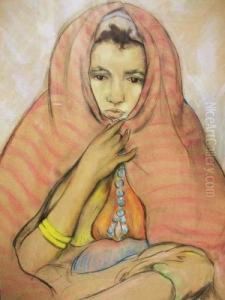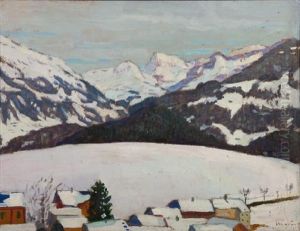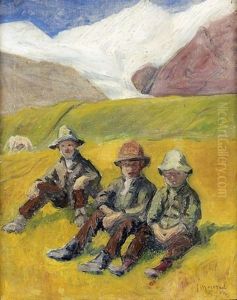Edouard Morerod Paintings
Edouard Morerod was a Swiss artist born in Aigle, Switzerland, in 1879. His artistic journey is a reflection of the vibrant and evolving art scene in Europe at the turn of the 20th century. Morerod's work is often associated with post-impressionism, a movement that sought to build upon the achievements of impressionism by adding a greater sense of structure and form to the fleeting impressions of the natural world captured by his predecessors. Despite his relatively short life, Morerod made significant contributions to the Swiss art scene and participated in the broader European art movements of his time.
Morerod's education and early career were marked by traditional art training, which he later expanded upon by embracing the innovative techniques and stylistic experiments that were characteristic of the post-impressionist movement. His work showcases a keen sensitivity to color and light, with compositions that blend naturalistic subjects with a subtle, yet distinct, personal expression. Although Morerod's oeuvre includes landscapes, portraits, and still lifes, it is his landscapes that are most celebrated for their vibrant colors and emotional depth. These pieces often depict the Swiss countryside, revealing Morerod's deep attachment to his homeland and its natural beauty.
Throughout his career, Morerod exhibited his work in various venues across Switzerland and abroad, gaining recognition among his contemporaries. However, his career was abruptly cut short when he died in 1919 at the age of 40. Despite his early death, Edouard Morerod's art continues to be appreciated for its contribution to the development of Swiss post-impressionism and its place within the broader context of European modernist movements. His legacy is preserved in the collections of Swiss museums and in the esteem of art historians who recognize his unique talent and the beauty of his artistic vision.











